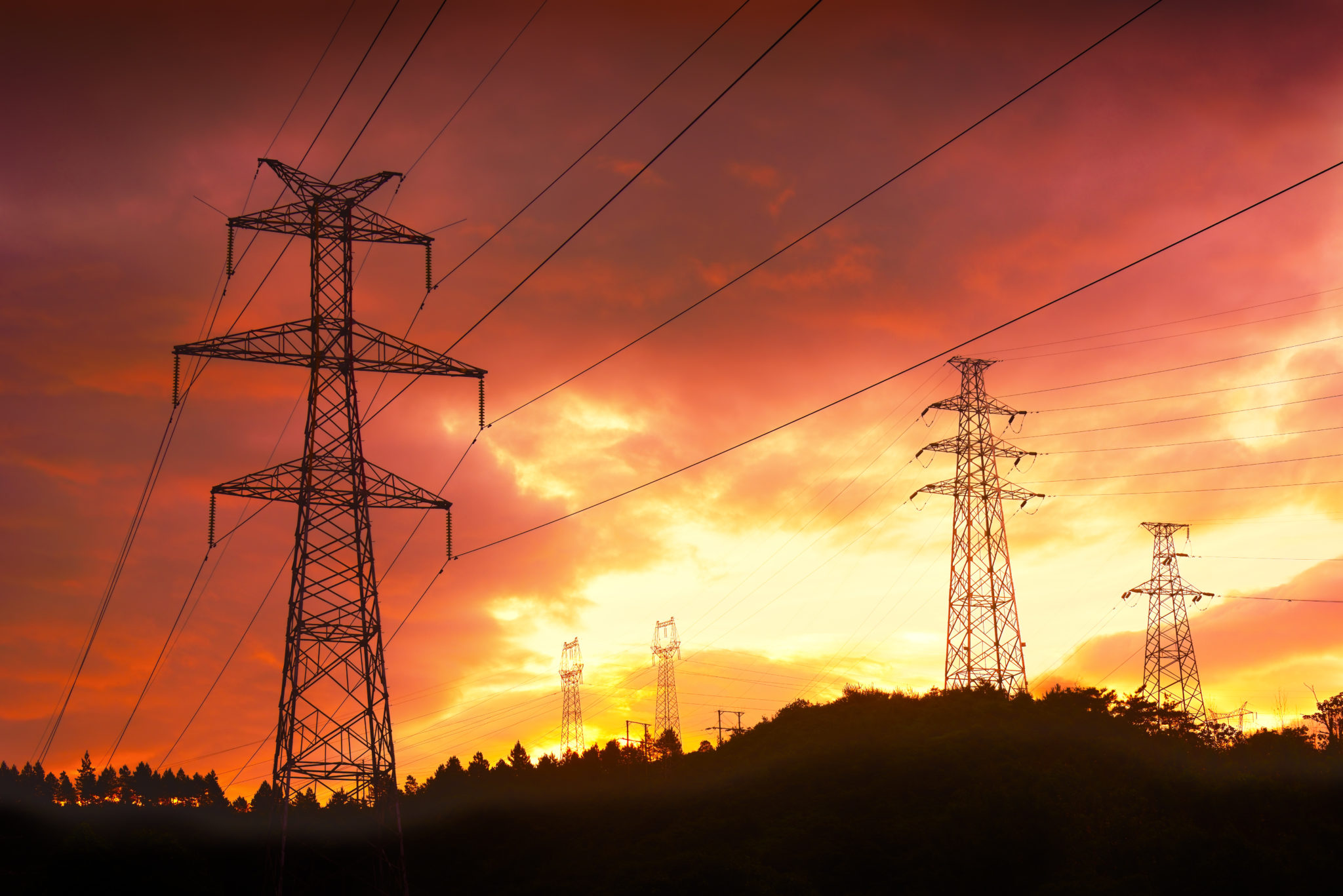The Energy Transition | Net zero and RIIO-2, Tesla's Virtual Power Plant and Ofgem's State of the Market Report
Published on 30th October 2020
This week's Energy Transition highlights include the role of net zero in Ofgem's RIIO-2 price control review, the postponement of Ofgem's State of the Market Report, National Grid's review of timescales for introducing replacement frequency response services and the new domestic Tesla/ Octopus Energy Virtual Power Plant.

Energy industry calls on Ofgem to put net zero at heart of RIIO-2
A number of energy companies have called upon Ofgem to make facilitating the achievement of the UK's net zero targets a primary focus of the forthcoming RIIO-2 regulatory price control framework.
In an open letter to Ofgem, a consortium of companies said that RIIO-2 "will be a critical enabler for reaching the UK’s net zero targets", and that RIIO-2 needs to "empower" investment in electric vehicle (EV) charging infrastructure and improvements in grid connections.
To support this conclusion, the letter notes that that at least 40GW of renewable energy will need to be connected to the electricity network in the next 10 years. Energy companies are concerned that without the correct regulatory framework in place, there is a risk that regulatory processes will constrain the ambition of the renewables sector.
Ofgem postpones State of the Market report
Ofgem has announced that it is postponing the publication of its annual State of the Market report this year due to the on-going Covid-19 pandemic. Ofgem explained that it has had to reprioritise its workload in response to the pandemic and it is also now reviewing how it provides information on the operation of the energy market.
In its statement, Ofgem said, “We continue to monitor the pandemic’s impact on the energy sector and continue to understand how we can best support all consumers, particularly those in vulnerable circumstances. We have taken action to respond as quickly as possible to the impacts, and will continue to do so as the situation develops”.
National Grid ‘reviewing the timescales’ of dynamic frequency services
National Grid Electricity System Operator (NG ESO) is reviewing its previously announced timelines for the introduction of its two outstanding dynamic frequency response services, as well as the much discussed phase out of its existing Firm Frequency Response (FFR) service.
The timelines for the introduction of the new services were originally outlined in NG ESO's 2019 Response and Reserve Roadmap, but these are currently under review due to the Covid-19 pandemic. The Roadmap detailed the operator's plans to implement a full suite of new services to replace FFR, consisting of Dynamic Containment (the launch of which we reported on earlier this month), and Dynamic Moderation and Dynamic Regulation which are yet to be implemented.
Switching from the long-established FFR to the dynamic suite of products could result in NG ESO facing some friction from older assets that currently use the existing service. For example, though price signals being sent to the market from Dynamic Containment suggest that market participants should be shifting from FFR to this new service, such a switch can result in metering challenges for older assets. Alex Done, lead scientist at energy transition data science company Modo Energy has suggested that these older assets might therefore require metering upgrades and additional investment in pre-existing sites in order to participate in the new Dynamic services.
Tesla Energy Plan launched
Tesla has recently unveiled the Tesla Energy Plan, which will allow UK homes to become part of a network of houses which generate and store electricity, dubbed the UK Tesla Virtual Power Plant.
Tesla, in partnership with Octopus Energy, is seeking to deliver 100% clean energy to homes across the UK, through a combination of roof-top solar panels, Octopus Energy's solar farms and Powerwall batteries. Surplus electricity generated by the homes will either be exported to the grid or stored within the Powerwall batteries. Tesla's Smart Energy Management System will manage this sale and storage of any surplus with an aim to optimise sales to the grid during peak times.
The Tesla Energy Plan offers flat electricity rates to its customers which Tesla states are the lowest in the UK and which will help customer's save 75% on their bills when compared with bills from the Big Six energy suppliers.
The Tesla Energy plan went live to select customers on 26 October.
Zero Carbon Humber calls on government to back major funding bid
The Zero Carbon Humber Partnership, which was established to further zero-carbon power stations the Humber, , has called upon the government to back its major funding bid.
The 12 organisations within the partnership, including Drax, National Grid and SSE, submitted a bid for £75 million of funding from the second phase of the government’s Industrial Strategy Challenge Fund. Their plan is to create the world’s first net zero industrial cluster by 2040 through low carbon hydrogen, carbon capture and negative emissions, known as carbon removal technology.
An open letter has been sent by the Partnership to energy minister Kwasi Kwarteng, calling for his backing for the project. The letter argues that if the bid was successful it will help unlock a potential multi-billion pound project, and reduce the UK’s annual emissions by 15%. The open letter is supported by 45 additional formal letters from non-partner organisations voicing their support for the project.
A decision is expected on the funding allocation in early 2021.
SSEN and UKPN team up to bring together EV data
The Skyline Partnership, formed by Scottish and Southern Electricity Networks and UK Power Networks, has launched a project to collate and share electric vehicle (EV) data collected through a network of car dealerships, chargepoint operators and electricity networks. The Partnership seeks to use this data to pinpoint hotspots of demand for EV charging infrastructure.
The Partnership has won funding from Ofgem’s Network Innovation Allowance and seeks to use this to "identify areas with high EV uptake to ensure power supplies stay reliable and smooth the customers’ journey as they switch to cleaner transport". With an expected 36 fold increase in EVs over the next 10 years, this Partnership is seen as just one of many measures necessary to help facilitate growth in the EV market.
Ambitious' UKPN reactive power market project hits new milestone with live trial
A project which aims to maximise the capacity of the electricity network to address a barrier to connecting more renewable energy and storage technology in the South-East region has begun its first end-to-end trial. The Power Potential Project, which is run by UK Power Networks (UKPN) and National Grid Electricity System Operator (NG ESO), hopes to create a reactive power market for distributed energy resources, and to enhance the level of coordination between the transmission and distribution systems.
The project uses the Distributed Energy Resources Management System , a software-based product developed by ZIV Automation to assist with the integration of more distributed solar and other energy resources, which has been incorporated into UKPN’s control room.
The project will begin with an eight week technical trial with the generators, followed by a 12 week trial of the live commercial markets which will finish in March 2021. If the trial is successful, work will continue to explore how the local and national networks can collaborate further around reactive power.
According to UKPN and NG ESO, the Power Potential Project, which is a world first, could enable the connection of up to an additional 4GW of local generation in the South East as well as saving energy consumers over £400 million by 2050.
Electric Vehicle Energy Taskforce can't 'rest on its laurels' as urgent actions for electrification are identified
The Electric Vehicle Energy Taskforce has reconvened with the aim of turning its proposals for facilitating the transition to electric vehicles (EVs) into action. The government-backed initiative was established in 2018 to bring together the organisations that will play a major role in the EV transition. The task force identified 21 initial proposals, released in January 2020, to maximise the benefits and minimise the challenges associated with EVs to the electricity networks and EV users.
At the launch event of the new phase of the taskforce, Philip New, the chair of the taskforce, said that "there was an appetite to not let the taskforce rest on its laurels and to take things forward". The taskforce has therefore published a new report detailing the areas where urgent action is needed among the original proposals, with four new working groups created to take these actions forward. These working groups are separated into: planning energy and transport; consumer experience; smart charging; and cybersecurity and data accessibility and privacy.



